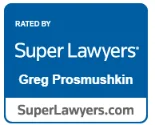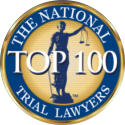Broadside collisions usually happen at crossroads, where vehicles coming from different directions meet. These accidents often occur because drivers go through red lights, don’t give way, or make mistakes about who should go first. Parking lots and T-junctions are also places where these collisions happen a lot. Being careful and driving safely in these spots can help avoid these kinds of accidents, which can be really serious.
An experienced Philadelphia car accident lawyer will help to determine the liable parties if you get involved in broadside collisions caused by someone else’s fault. They will not only help you know whether you have a viable case but will also help to pursue fair compensation for your damages.
What is broadside collision?
Broadside collisions, also known as T-bone collisions, are among the most hazardous types of accidents on the road. They occur when the front end of one vehicle strikes the side of another vehicle, forming a T-shaped impact. Understanding where these collisions are most likely to occur and how to prevent them is crucial for ensuring road safety.
Common Causes of Broadside Collisions
Before we start talking about where these types of crashes often happen, let’s understand why they occur. One significant reason is when drivers aren’t fully concentrating on driving, known as distracted driving. Imagine someone not paying attention to the road and accidentally going through a red light or neglecting to stop at a stop sign.
This can lead to crashing into the side of another vehicle because they didn’t notice it coming. Another big issue is speeding, which is a major cause of broadside collisions. When a driver is going too fast, it takes more time to slow down and respond to changes in traffic, road obstacles, and accidents. This might force the driver to brake suddenly and even lose control of the car.
Other common causes of broadside collisions include driving under the influence of alcohol and drugs, poor weather conditions, reckless and aggressive driving, or falling asleep while driving.
The Majority of Broadside Collisions Occur at Intersections
When we look at the places where broadside collisions happen the most, intersections stand out as the top location. Intersections are spots where different roads meet, creating complex traffic patterns. These junctions are often equipped with traffic lights, stop signs, and yield signs to control the movement of vehicles. Despite these precautions, broadside collisions continue to occur at intersections due to various factors.
It’s logical that intersections are where most broadside collisions take place. After all, these points are where vehicles moving in different directions intersect. Sometimes, a driver might not stop when they should at a red light or yield sign, and this can lead to them crashing into another car that’s crossing their path. Intersections are even more risky when drivers aren’t fully paying attention to the road because they might not see important traffic signals or notice other cars around them.
Intersections are widely recognized as some of the most hazardous places on roads all across the country. In fact, their risk is so significant that many local governments are replacing traditional intersections with roundabouts. The objective here is to maintain traffic flow while simultaneously reducing the occurrence of accidents. What’s more, roundabouts prevent vehicles from crossing paths at right angles, thereby decreasing the likelihood of broadside accidents.
Steps to Take After a Broadside Collision
If you find yourself involved in a broadside collision, it’s crucial to know the appropriate steps to take immediately:
- Check for Injuries: First, make sure you and anyone else in the car are okay. If there are any serious injuries, it’s really important to call 911 for medical help right away. Also, remember that some injuries, like TBI (Traumatic Brain Injury), might not show up right away. Even if you don’t feel hurt, it’s a good idea to see a doctor, especially if you experience symptoms like headaches after the car accident. Having a medical professional check you out and document any injuries is really important to make sure you’re okay and get the right care.
- Report to Authorities: Calling the police helps to protect and preserve the accident record. The police will create a report that documents what happened in your accident. While the police report may not assign fault, it will help the insurance company and your personal injury attorney to determine who was at fault in the accident.
- Exchange Information: Exchange contact and insurance details with the other driver(s) involved in the collision.
- Document the Scene: Take photos of the accident scene, including the positions of the vehicles, any skid marks, and relevant traffic signs or signals.
- Inform Your Insurance Company: Contact your insurance company to report the accident and initiate the claims process.
- Call a car accident lawyer: A lawyer knows what you’re going through, that you need financial assistance to get better, and will strive to get you the compensation you deserve so that you can make a full recovery and get back to the life you love.
Seeking Compensation After a Philadelphia Broadside Car Accident
If you suffered serious injuries in a broadside car accident caused by another driver’s negligence you deserve maximum compensation for your injuries. Fighting with insurance companies can be daunting, which is why seeking the expertise of experienced lawyers is strongly recommended.When a broadside collision occurs, it’s vital to determine responsibility for costs. If the other driver’s mistake caused it, they might cover medical bills, car repairs, lost income, and distress. Sometimes both share blame, settled by “comparative negligence.” A lawyer ensures fairness. If costs surpass insurance, it’s a “Car Accident Claim Exceeding Insurance Limit.” Legal advice is vital for rightful compensation.The attorneys at Law Offices of Greg Prosmushkin P.C have helped thousands of injured clients throughout the Philadelphia area following broadside accidents and other types of car crashes. Contact our law firm to schedule a free consultation with one of our experienced Philadelphia broadside accident attorneys.






